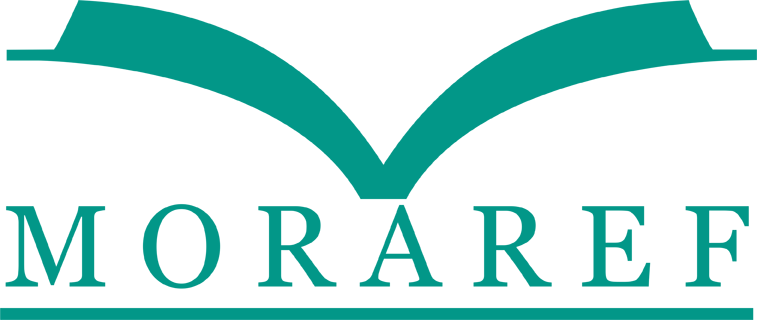The Effect of Gargling Areca Nut Extract (Areca catechu L) 2,5% Against Plaque pH and Saliva pH
Abstract
ABSTRACT
The most common dental and oral health problems are dental caries and periodontal disease caused by dental plaque. Dental plaque is a soft deposit consisting of microorganisms found on a matrix that is formed and adheres tightly to the tooth surface. Bacteria in plaque will metabolize food waste, especially the type that can be fermented so that it will produce acid. The acid produced will lower the plaque pH to 4.5-5.0 wthin 1-3 minutes and return to normal at pH 7 within 30-60 minutes. Plaque buildup on the tooth surfaces is related to plaque pH salivary pH. The continuous decrease in plaque pH and salivary pH will cause demineralization. The purpose of this study was to determine the effect of gargling betel nut extract (Areca catechu L) 2.5% on plaque pH and salivary pH.
The study was a quasi-experiment research with two group pretest-posttest design. The sample used in this study were 16 samples, 6th graders at SDN Pontianak Utara using the Total Sampling method. The sample was instructed to rinse with a 2.5 % betel nut extract moutwash solution and measure the plaque pH and salivary pH before and after gargling. The control group rinsed with 1% povidone iodine (Betadine Moutwash). Data analysis using the tes Wilcoxon to find out the difference between the influence variables and the affected variables.
The results of this study based on the test were Wilcoxon test, the results showed that the average plaque pH before and after gargling with betel nut extract was 2.5% 7.06 and 7.22 p-value = 0.000 (p< 0.05). The average pH of saliva before and after gargling a 2.5% betel nut extract solution was 6.56 and 5.59 p-value = 0.000 (p< 0.05). So it can be concluded that gargling 2.5% betel nut extract solution has an effect on changes plaque pH and salivary pH.
Keywords
Full Text:
PDFReferences
Daftar Pustaka
Adzakiyah, T., Lipoeto, I., & Kasuma, N. (2015). Pengaruh Berkumur dengan Larutan Ekstrak Siwak (Salvadora persica) Terhadap pH Saliva Rongga Mulut. Jurnal Sains Farmasi & Klinis, 2(1), 74-77.
Kementrian Kesehatan Republik Indonesia. 2018. Pusat data dan Informasi Kementerian Kesehatan RI, (Pusdatin) 2018. Jakarta: Selatan Data dan Informasi.
Kementrian Kesehatan Republik Indonesia. 2018. Riset Kesehatan Dasar (Riskesdas) 2018. Jakarta: Badan Penelitian dan Pengembangan Kesehatan.
Noveliani, S. (2019). Pengaruh Berkumur Ekstrak Biji Pinang (Areca catechu L) 2, 5%. Skripsi. Terhadap Penurunan Jumlah Bakteri dalam Saliva pada Mahasiswa FKG USU Medan.Skripsi.
Rosihan, A., & Shandy, H. (2014). Perbedaan pH saliva menggosok gigi sebelum dan sesudah mengkonsumsi makanan manis dan lengket. DENTINO-JURNAL KEDOKTERAN GIGI, 2(1), 39-45.
Prasetyo, E. A. (2005). Keasaman minuman ringan menurunkan kekerasan permukaan gigi (Acidity of soft drink decrease the surface hardness of tooth). Dental Journal (Majalah Kedokteran Gigi), 38(2), 60-63.
Rezki, S. (2014). Pengaruh pH Plak Terhadap Angka Kebersihan Gigi Dan Angka Karies Gigi Anak Di Klinik Pelayanan Asuhan Poltekkes Pontianak Tahun 2013. ODONTO: Dental Journal, 1(2), 13-18.
Angela, A. (2005). Pencegahan primer pada anak yang berisiko karies tinggi (Primary prevention in children with high caries risk). Dental Journal (Majalah Kedokteran Gigi), 38(3), 130-134.Depkes, R. I. (1989). Materia Medika. Jilid V. Jakarta: Direktorat Jenderal Pengawasan Obat dan Makanan.
Putri, H.E., Agusmawanti, P. dan Ismail, A. 2014. Pengaruh Berkumur Sari Buah Anggur Merah Berbagai Konsentrasi dan Chlorhexidine 0,12% Terhadap Indeks Plak.Odonto Dental Journal. 1(1):1-5.
Natarini, F. W. (2007). Perbandingan Efek Antibakteri Jus Anggur Merah (Vitis vinifera) Pada Berbagai Konsentrasi Terhadap Streptococcus mutans. Artikel Publikasi Ilmiah Fakultas Kedokteran. Institutional Repository (UNDIP-IR). Universitas Diponegoro.
Yernisa, E., & TIP, K. S. (2013). Aplikasi Pewarna Bubuk Alami dari Ekstrak Biji Pinang (Areca catechu L.) pada Pewarnaan Sabun Transparan. Jurnal Teknologi Industri Pertanian, 23(3).
Anela, N. 2012. Pengaruh ekstrak Biji Pinang (Areca catechu L) Terhadap Pertumbuhan Candida albicans. Skripsi. Fakultas Kedokteran Gigi Unsyiah.
Gunsolley, J. C. (2010). Clinical efficacy of antimicrobial mouthrinses. Journal of denstistry, 38, S6-S10
Sopiah, S., Arma, U., & Busman, B. (2017). AKTIVITAS ANTIJAMUR EKSTRAK BUAH PINANG TUA (Areca catechu L) TERHADAP JAMUR Candida albicans PADA PASIEN KANDIDIASIS RONGGA MULUT. B-Dent: Jurnal Kedokteran Gigi Universitas Baiturrahmah, 4(2),126-132.
Hoštacká, A., Čižnár, I., & Štefkovičová, M. (2010). Temperature and pH affect the production of bacterial biofilm. Folia microbiologica, 55(1), 75-78.
Sulastri T. Analisis kadar tanin ekstrak air dan ekstrak etanol pada biji Pinang (Areca catechu L): J Chemica 2009; 10(1): 59-60.
Lisnayetti, L. (2017). Perbedaan pH Saliva Berkumur Dengan Obat Kumur Yang Mengandung Daun Sirih Dan Obat Kumur Yang Mengandung Povidone Iodine Pada Siswa MTSN 1 Bukittinggi. Menara Ilmu, 11(74)
DOI: https://doi.org/10.31983/jkg.v9i2.8504
Article Metrics
Refbacks
- There are currently no refbacks.
| View My Stats |











.png)


.png)
.png)








